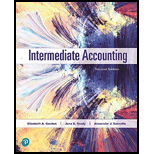
Concept explainers
Cognitive Bias. A team of accounting students is working on a case where they are required to assess a set of information to determine a company’s allowance for
The company’s allowance for bad debts has been 5% of its receivables for the last several years
This year, the company has strengthened its credit extension policy.
The average time that an
The economy has weakened over the year, with a pending recession.
Following is part of the discussion at their first team meeting. Analyze the discussion and determine the type of cognitive bias most consistent with the statements made by each student, providing an explanation for your answer.
Discussion
Tom initiated the discussion saying, “I have seen this kind of situation before when a company has to report a higher allowance than last year. Allowances are always increasing.”
Jennifer offered. “The first piece of information in the case is always the most important.
The bad debts have historically been 5%. Therefore, the allowance has to be 5%.”
Jake added, “As I look at the case, I keep coming back to the fact that the average time that an account receivable has been outstanding has increased by 10 days. In my view, this is the most important piece of information—the other facts don’t matter.”
Manna’s view was, “Even though the economy has deteriorated, the historical data is always more important. The general trends in the economy are not relevant.”
Want to see the full answer?
Check out a sample textbook solution
Chapter 3 Solutions
Intermediate Accounting (2nd Edition)
- hi expert please help mearrow_forwardHello tutor provide solution this financial accounting questionarrow_forwardSunderland Company has budgeted total factory overhead for the year at $520,000, divided into two departments: Cutting $360,000 and Finishing $160,000. Sunderland manufactures two products: desks and cabinets. Each desk requires 2 direct labor hours in Cutting and 4 direct labor hours in Finishing. Each cabinet requires 4 direct labor hours in Cutting and 7 direct labor hours in Finishing. Each product is budgeted for 4,200 units of production for the year. Determine the departmental factory overhead rate for the Cutting Department.arrow_forward
- Please give me correct answer this financial accounting questionarrow_forwardPer the video, the lessee will take advantage of an option to buy a $130,000 truck in two years for $65,000, and will make annual payments of $41,303. The truck has a useful life of 5 years, and an estimated salvage value of $15,000. The lessee knows the lessors rate is 12%. Make the journal entry to record the lease on January 1, year1. Remember the first lease payment is made at the beginning of the lease.arrow_forwardSFX Fragrances has two divisions: The Perfume Division and the Packaging Division. The Packaging Division produces bottles that can be used by the Perfume Division. The Packaging Division's variable manufacturing cost is $2.50, shipping cost is $0.15, and the external sales price is $3.50. No shipping costs are incurred on sales to the Perfume Division, and the Perfume Division can purchase similar bottles in the external market for $3.00. Assume the Packaging Division has no excess capacity and could sell everything it produced externally. Using the general rule, the transfer price from the Packaging Division to the Perfume Division would be $___.arrow_forward
- Do fast answer of this accounting questionsarrow_forwardLansford Manufacturing computes its predetermined overhead rate annually on the basis of direct labor hours. At the beginning of the year, it estimated that its total manufacturing overhead would be $620,000 and the total direct labor hours would be 42,000 hours. Its actual total manufacturing overhead for the year was $748,800, and its actual total direct labor was 43,500 hours. Required: Compute the company's predetermined overhead rate for the year, calculate the total overhead applied, and determine the amount of under- or over-applied overhead in the year.arrow_forwardSilverline Manufacturing planned to use 1.5 yards of fabric per unit, budgeted at $65 a yard. However, the fabric actually cost $67 per yard. The company actually made 1,500 units, although it had planned to make only 1,300 units. Total yards used for production were 2,280. How much is the total materials variance? Answerarrow_forward
 Essentials of Business Analytics (MindTap Course ...StatisticsISBN:9781305627734Author:Jeffrey D. Camm, James J. Cochran, Michael J. Fry, Jeffrey W. Ohlmann, David R. AndersonPublisher:Cengage Learning
Essentials of Business Analytics (MindTap Course ...StatisticsISBN:9781305627734Author:Jeffrey D. Camm, James J. Cochran, Michael J. Fry, Jeffrey W. Ohlmann, David R. AndersonPublisher:Cengage Learning College Accounting, Chapters 1-27AccountingISBN:9781337794756Author:HEINTZ, James A.Publisher:Cengage Learning,
College Accounting, Chapters 1-27AccountingISBN:9781337794756Author:HEINTZ, James A.Publisher:Cengage Learning, Cornerstones of Cost Management (Cornerstones Ser...AccountingISBN:9781305970663Author:Don R. Hansen, Maryanne M. MowenPublisher:Cengage Learning
Cornerstones of Cost Management (Cornerstones Ser...AccountingISBN:9781305970663Author:Don R. Hansen, Maryanne M. MowenPublisher:Cengage Learning EBK CONTEMPORARY FINANCIAL MANAGEMENTFinanceISBN:9781337514835Author:MOYERPublisher:CENGAGE LEARNING - CONSIGNMENT
EBK CONTEMPORARY FINANCIAL MANAGEMENTFinanceISBN:9781337514835Author:MOYERPublisher:CENGAGE LEARNING - CONSIGNMENT




